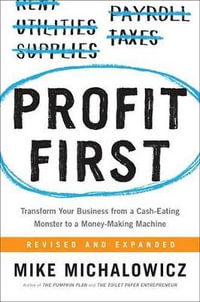| List of Illustrations | p. xii |
| Acknowledgments | p. xv |
| Introduction | p. 1 |
| The Starting Experience: Theory and Intuition | p. 5 |
| Learning to March: Experience of Control | p. 7 |
| Turbulent Contexts | p. 7 |
| Trinidad: a Trial by Fire | p. 10 |
| An Insight from Rome | p. 13 |
| Rewards for Innovation? | p. 15 |
| Stumped Again | p. 20 |
| The Classical Literature and Control-Centeredness | p. 23 |
| First Concepts of Organization | p. 23 |
| Purpose and the Classical Period | p. 27 |
| Learning to Dance: Experience of Influence | p. 32 |
| Reading the Music | p. 32 |
| Power | p. 34 |
| Taking the First Steps: Consultants, Tools, and Answers | p. 36 |
| The Dance Begins | p. 41 |
| The Dance Takes Form | p. 45 |
| The AIC Form in Embryo | p. 46 |
| Open Systems and Influence | p. 48 |
| Organization Environment Relations | p. 49 |
| The Move to Process | p. 50 |
| Stakeholders | p. 55 |
| Purpose in the Open-Systems Phase | p. 57 |
| Learning to Fly: Experience of Appreciation | p. 60 |
| The Academic Opening | p. 60 |
| The Breakthrough Intuition | p. 63 |
| Stakeholders as Dancing Partners: Anchoring the Concept of Influence | p. 73 |
| New Levels and New Depths | p. 74 |
| International Development: Examples and Evolving Concepts of Wholeness | p. 75 |
| The World Bank Experience | p. 75 |
| Santa Marta, Colombia | p. 75 |
| Santa Marta Effects | p. 83 |
| New Levels Outside of the World Bank | p. 86 |
| Thailand Does It All | p. 86 |
| The Literature on the Emerging Phase: Embracing Wholeness | p. 91 |
| Beyond Open Systems | p. 91 |
| Summary | p. 102 |
| The Philosophy, Theory, Model, and Process | p. 103 |
| The Emerging Philosophy: The Nature of Purpose | p. 106 |
| Insights from Religion, Philosophy, and Science | p. 106 |
| The Common Message from Religions | p. 108 |
| Science Demurs | p. 113 |
| Philosophy, Purpose, and Manifest Power | p. 113 |
| The Emergent Philosophy of Organization: Purpose [right arrow] Time [right arrow] Power | p. 121 |
| Unconscious Purpose | p. 124 |
| Practical Synthesis of Conscious and Unconscious Purpose | p. 131 |
| Summary | p. 133 |
| Building the Theory | p. 134 |
| Purpose and Power Fields | p. 134 |
| Power Fields Are Organized Dimensionally | p. 136 |
| A Natural Example | p. 136 |
| The Brain and Five-Dimensional Organization | p. 141 |
| The Reptilian Brain | p. 142 |
| The Mammalian Brain | p. 143 |
| The Neocortex | p. 144 |
| Our Visual System | p. 145 |
| Color as a Five-Dimensional Language of Power | p. 146 |
| Color Perception | p. 146 |
| Summary: The Contribution of the Dimensional Perspective | p. 154 |
| Building the AIC Model | p. 156 |
| The Dimensional Perspective | p. 156 |
| Purpose, Zero Dimensions, and the Complementarity Link to Wholeness | p. 156 |
| One-Dimensional Organization | p. 157 |
| Two-Dimensional Organization | p. 158 |
| Three-Dimensional Organization | p. 158 |
| Four-Dimensional Organization | p. 161 |
| Five-Dimensional Organization | p. 162 |
| Fractal Dimensions | p. 165 |
| The Nine Basic Manifest Powers | p. 170 |
| The Power Relationships as Holons | p. 172 |
| Appreciative-Centered Organization: Five-Dimensional Mind Space | p. 173 |
| Influence-Centered Organization: Four-Dimensional Timing | p. 175 |
| Control-Centered Organization: Three-Dimensional Physical Space | p. 179 |
| Summary | p. 180 |
| The Process in Practice | p. 183 |
| Principles in Process | p. 184 |
| Purpose | p. 186 |
| Making the Impossible Possible: The Appreciative Field | p. 190 |
| (A-a) Discovery | p. 192 |
| (A-i) Diplomacy | p. 192 |
| (A-c) Visioning | p. 192 |
| Orchestrating the Dance of Influence | p. 196 |
| (I-a) Evaluation | p. 197 |
| (I-i) Negotiation | p. 197 |
| (I-c) Strategy | p. 198 |
| Leadership Role | p. 199 |
| The Control Phase: Action as Feedback | p. 202 |
| (C-a) Appraisal, Reflection | p. 203 |
| (C-i) Working Agreements | p. 203 |
| (C-c) Operations, Action | p. 203 |
| Summary: Back to the Center | p. 204 |
| Implications for Ourselves, Our Organizations, and the World | p. 207 |
| Implications for Ourselves | p. 209 |
| Discovering Our World | p. 210 |
| Telling the Story | p. 210 |
| Committing to Action | p. 212 |
| The Power Map | p. 218 |
| Implementing Appreciation | p. 219 |
| Implementing Influence | p. 220 |
| Implementing Control | p. 221 |
| Creating the Power Map | p. 222 |
| How to Interpret the Power Map | p. 224 |
| Interpretation of the Fifth or Mind/Spirit Dimension | p. 226 |
| Interpretation of the Fourth or Relational Dimension | p. 227 |
| Interpretation of the Third Dimension | p. 227 |
| Preferred Ends and Means-Second and First Dimension | p. 228 |
| Interpreting Zero-Dimensions | p. 229 |
| The Power Map and Leadership | p. 230 |
| Leading Appreciative-Centered Organizations | p. 230 |
| Leading Influence-Centered Organizations | p. 231 |
| Leading Control-Centered Organizations | p. 232 |
| Summary | p. 234 |
| Implications for Cultures, Institutions, and Organizations | p. 235 |
| Cultures as Context | p. 236 |
| Institutions and Long-Term Values | p. 239 |
| Organizations as Individuals | p. 240 |
| Power Patterns for Organizational Effectiveness | p. 242 |
| Effective Appreciative-Centered Organization | p. 242 |
| Effective Influence-Centered Organization | p. 244 |
| Effective Control-Centered Organization | p. 246 |
| Illustration of Practical Use of Value Priorities and Sequence | p. 247 |
| The Action/Learning/Organizing Process | p. 249 |
| Priorities as Identified by the Community Meeting | p. 251 |
| Summary | p. 256 |
| The Humpty Dumpty Rule | p. 260 |
| Exploring the Potential | p. 260 |
| Facing the Reality | p. 269 |
| Fifth Dimension: Spiritual System | p. 271 |
| Fourth Dimension: Political System | p. 272 |
| Third Dimension: Executive System | p. 272 |
| Historical Test | p. 272 |
| An African Test | p. 276 |
| The Feminine-Masculine Test | p. 276 |
| Practical Impact of the Appreciative Level | p. 278 |
| Summary | p. 283 |
| Reflections | p. 284 |
| The Three Transformations | p. 284 |
| Transforming Ourselves | p. 284 |
| Transforming Our Organizations | p. 287 |
| Transforming Our World | p. 291 |
| Appendix | p. 293 |
| Notes | p. 305 |
| References | p. 311 |
| Index | p. 319 |
| Table of Contents provided by Ingram. All Rights Reserved. |
























